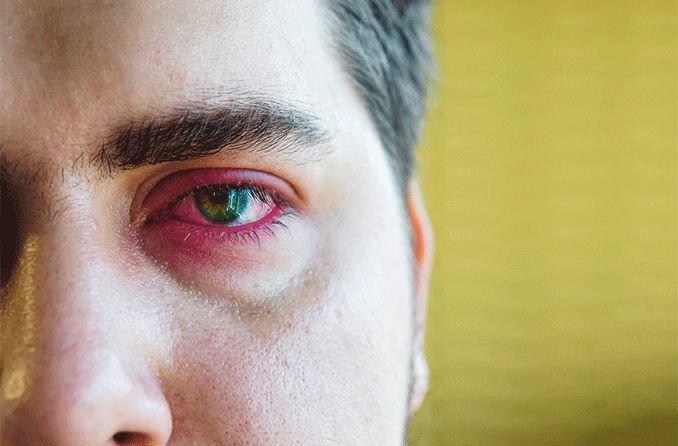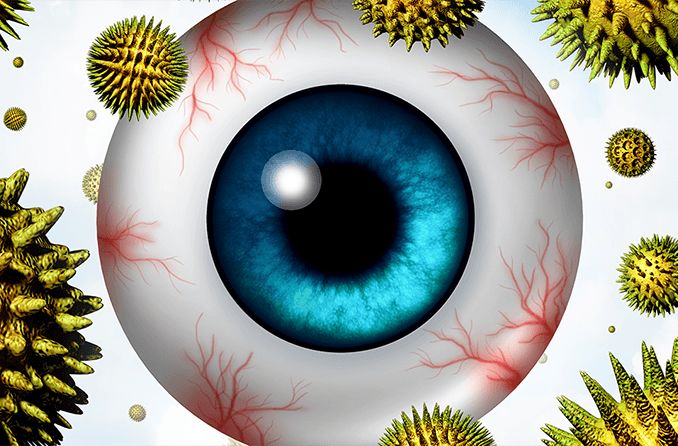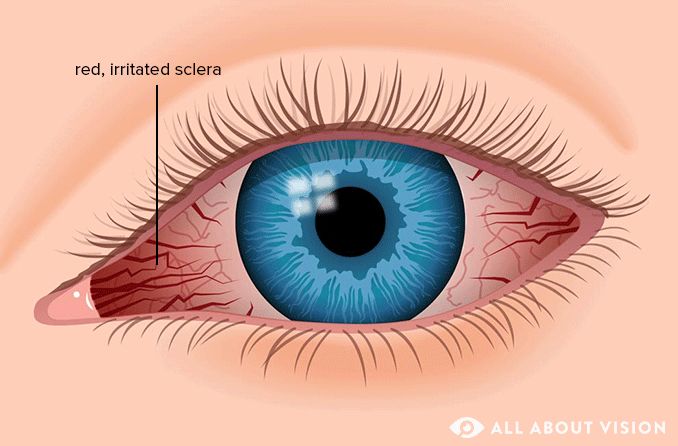Eye inflammation is the eye’s response to irritation, infection or injury. Eye inflammation symptoms can include redness, swelling, tenderness to the touch, pain, burning or tearing of the eyes and sensitivity to light. Different areas of the eye or eyelid can be affected, depending on the cause.
Eye inflammation is common and can last for a few days or weeks or become chronic and last for years. Inflammation can occur in one or both eyes. Treatment for eye inflammation depends on the underlying cause.
Eye inflammation causes
The causes of eye inflammation fall into several categories:
Allergies, including reactions to seasonal pollens, animal dander, and dust. Eye allergies are common and are also called allergic conjunctivitis. When the eyes are irritated by an allergen, they produce histamine, which causes them to become red, warm, itchy and swollen.
Injury or trauma, including bruises, blows, punctures and scratches.
Infection caused by bacteria, fungus or viruses.
Some autoimmune illnesses, such as rheumatoid arthritis, may affect the eyes.
SEE RELATED: What causes swollen eyelids?
Eye inflammation types
There are different types of eye inflammation, depending on the cause. Here are some common types:
A stye is an infection in the eyelid that causes a tender, red bump near the edge of the lid. A stye (also called a hordeolum) is caused by bacteria, usually due to clogged oil glands in the eyelid.
Uveitis is an inflammation of the eye’s uvea, which is the middle layer of the eye. It can be acute or chronic, and symptoms include decreased visual acuity, eye pain, red eyes and sensitivity to light (photophobia). Uveitis occurs most frequently in people ages 20 to 60 and affects men and women equally.
Blepharitis is an inflammation of the eyelids that leads to red, swollen lids and crusty eyelashes.
Allergic inflammation is often due to pollen, dust or animal dander. Eyes will be red, itchy and watery.
Dry eye syndrome is caused by a chronic lack of sufficient lubrication and moisture on the surface of the eye. Symptoms can include burning, itchy, fatigued and sore eyes, a sensation of dryness and irritation, red eyes, blurred vision and sensitivity to light. Consequences of dry eyes range from subtle, but constant, eye irritation to significant inflammation and even scarring of the front surface of the eye.
Conjunctivitis or pink eye is due to an infection, leading to a red or pink tint to the white of the eye (sclera), swelling, increased tear production and a feeling of irritation, itching and burning. The infection can be due to bacteria or viruses.
Endophthalmitis is a severe inflammation of the inside of the eye, usually due to bacterial or fungal infection. Symptoms include red and inflamed eyes, swollen eyelids, sensitivity to bright light and pus inside the eye.
Iritis is inflammation of the colored part of your eye (iris). Eyes may be red, there may be eye and brow pain, sensitivity to light, blurry vision and a headache.
Keratitis is a painful inflammation of the cornea. It can have numerous causes and leads to red, irritated, watery eyes, swollen eyelids, eye pain and blurry vision.
Injury to the eye can be due to sports injuries, accidents or penetration of a foreign object into the eye. This leads to pain, swelling, redness and possibly infection.
Sometimes, eye inflammation can be a sign of a serious condition, such as orbital cellulitis or a corneal abrasion, for which immediate doctor care is critical.
Eye inflammation treatment
Once your doctor determines what type of eye inflammation you have, you can be treated. Treatments range from eye hygiene and keeping eyes clean, to eye drops that contain medication, to oral medicines such as antibiotics, antihistamines, anti-inflammatories and steroids.
If eye inflammation is related to an autoimmune condition such as lupus, Cogan's Syndrome, or rheumatoid arthritis, the underlying condition will also be treated. For minor eye irritation, allergies or dry eyes, lubricating eye drops and damp compresses can help improve symptoms. Avoid contact lenses when your eyes are inflamed. Try not to rub your eyes, as this may irritate them further.
SEE RELATED: How to treat a swollen eyelid quickly
Dry eye inflammation
Dry eye syndrome, also called dry eye disease (DED), is one of the most common eye conditions in the world. It’s a primary reason for visits to the eye doctor and is more prevalent as we age. The majority of people over age 65 experience some dry eye symptoms. In fact, an estimated 16 million Americans have been diagnosed with DED, with women suffering more often than men.
Dry eye syndrome develops when the hydrating tear film on the surface of the eye, which keeps it moist and lubricated, is impaired or begins to dry out. Many people find relief from dry eye symptoms with artificial tears and by applying warm compresses at night.
There are numerous potential triggers of dry eye syndrome. A few are:
Menopause
Excessive computer use
Contact lens wear
Arid climates or dry indoor air
Certain medications
READ NEXT: What is Hypopyon?
Eye drops for inflammation
There are many different types of eye drops that can treat inflammation. The key is to know the cause. For instance, there are many eye drops for allergies that can bring relief. These include eye drops that contain antihistamines, anti-inflammatory medications, steroids, decongestants and other medications. Some are available over the counter at your drugstore or pharmacy, and others will be prescribed by your doctor.
Chronic eye inflammation
Sometimes — as with the case of dry eye syndrome, blepharitis or even conjunctivitis — eye inflammation can become chronic. Whatever the cause of your eye inflammation, it’s important to see an eye doctor for a careful evaluation and a professional recommendation for the best treatment approaches. Early evaluation by an eye doctor can be important for protecting your vision for life.
READ NEXT: Eyelid inflammation: Causes and treatment








